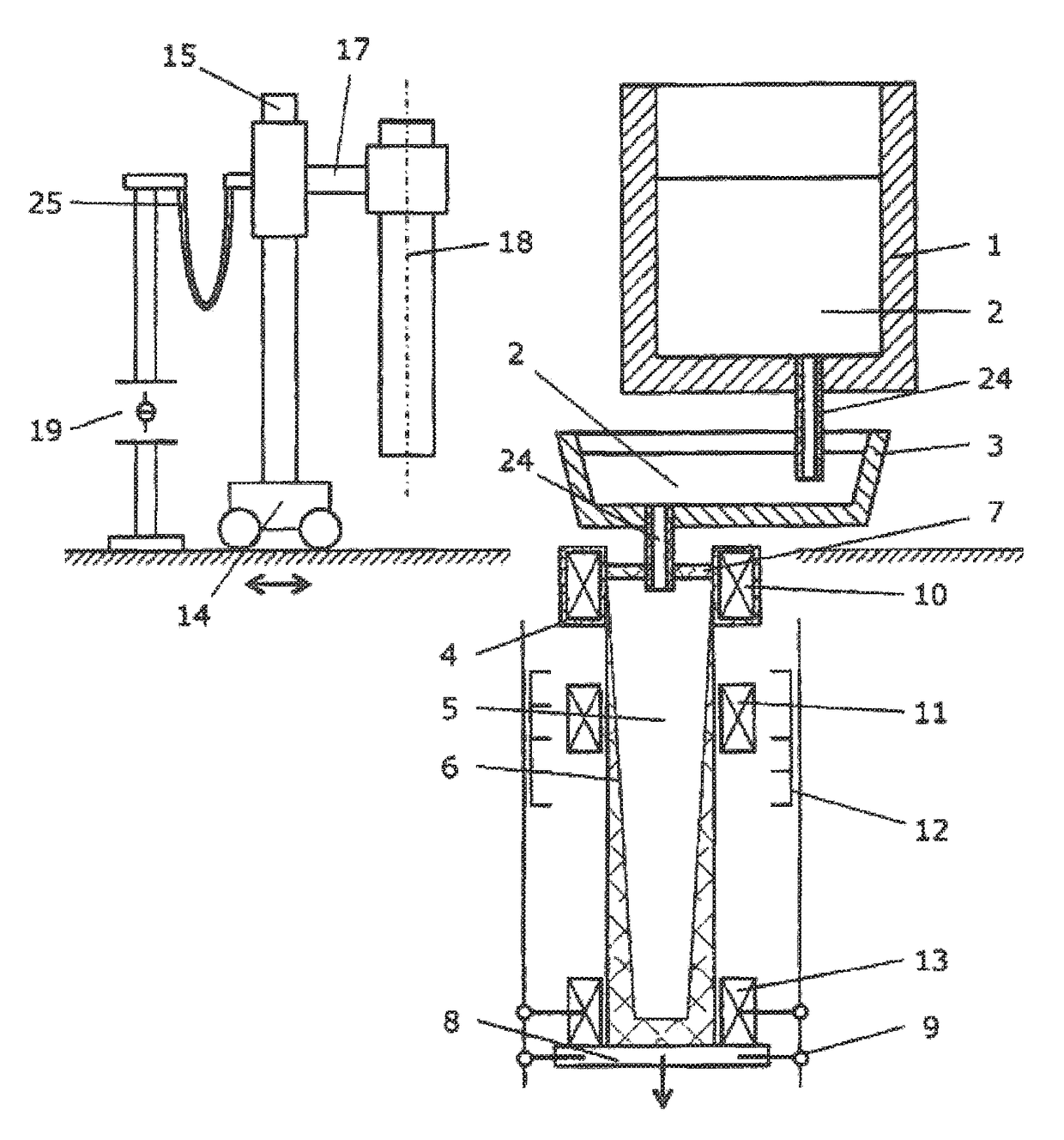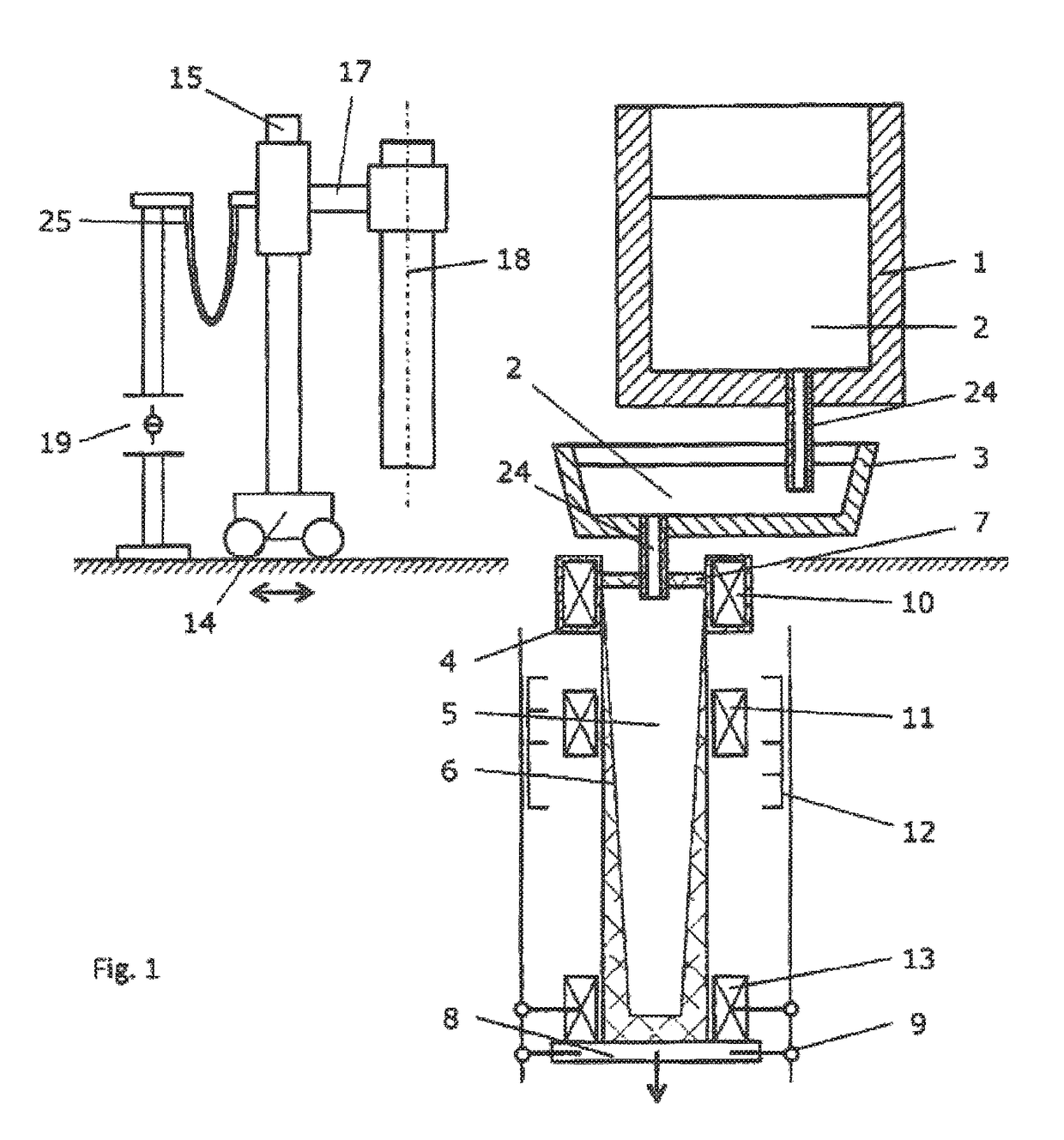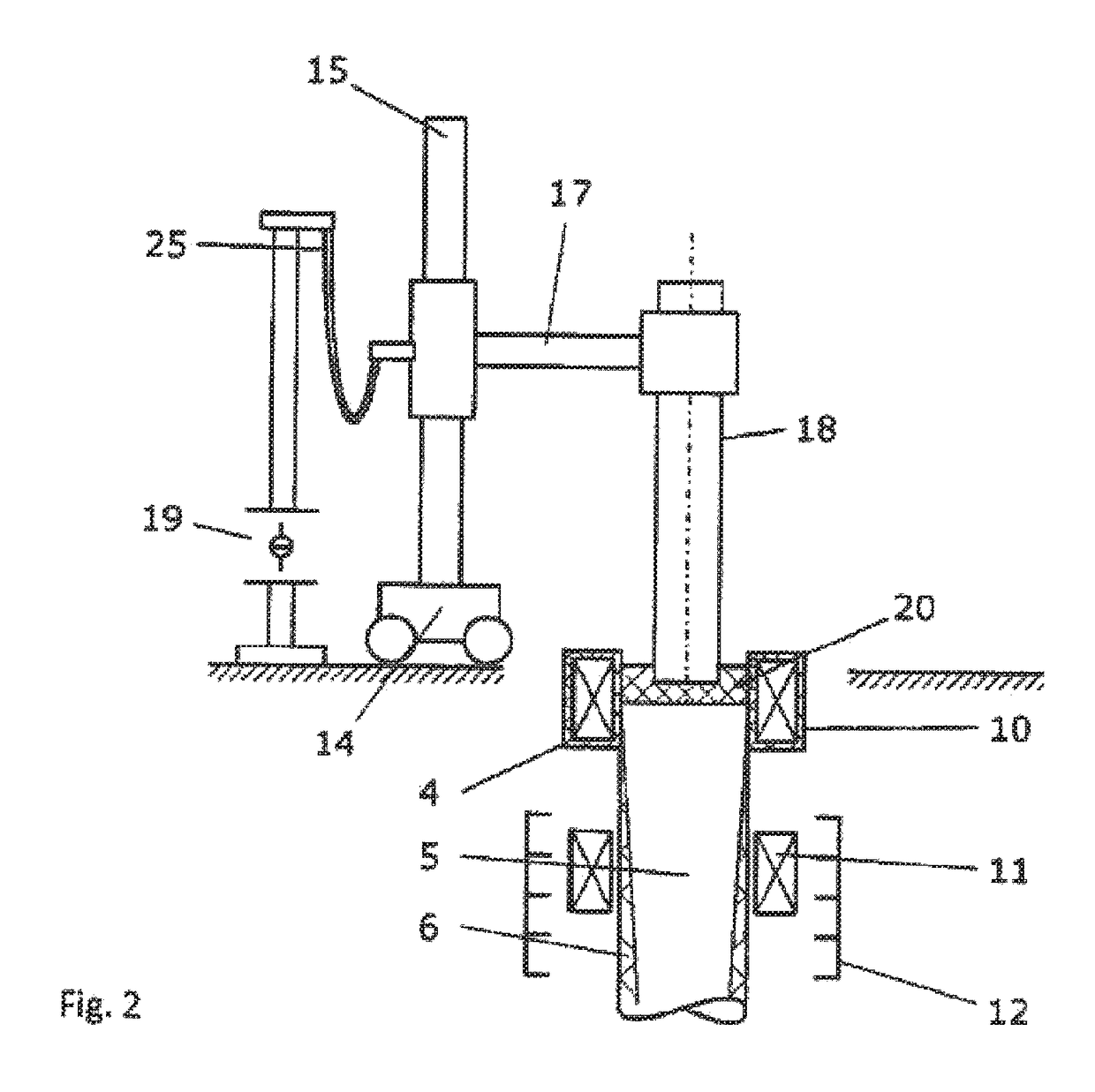Method and plant for the production of long ingots having a large cross-section
a technology of long ingots and molds, applied in non-electric variable control, flow control, instruments, etc., can solve the problems of insufficient quality removal, limited service life of grey cast iron ingot molds, and inability to use such ingots for other products, etc., to achieve the effect of improving the quality level
- Summary
- Abstract
- Description
- Claims
- Application Information
AI Technical Summary
Benefits of technology
Problems solved by technology
Method used
Image
Examples
Embodiment Construction
[0032]FIG. 1 shows a schematic representation of a plant suitable for the implementation of the method according to the invention during the regular casting process. The liquid metal 2, preferably liquid steel, contained in a lined casting ladle 1 arrives across a likewise lined intermediate vessel 3 at the short, water-cooled, oscillating ingot mold 4, which may be provided with an ingot mold stirrer 10 in the liquid metal pool 5, which is enclosed by the solidified slab shells of the casting ingot 6 being formed.
[0033]The metal level in the ingot mold 4 is generally covered through casting powder 7. It is also possible to perform the metal feeding to the ingot mold 4 directly from the casting ladle 1, and to be dispensed with the intermediate vessel 3. The liquid metal 2 is lead through so-called ceramic shrouds 24 for protection against oxidation.
[0034]The ingot 6 being formed, which is resting on a bottom plate 8 with the withdrawing mechanism 9, is detached downwards according ...
PUM
| Property | Measurement | Unit |
|---|---|---|
| lengths | aaaaa | aaaaa |
| diameters | aaaaa | aaaaa |
| lengths | aaaaa | aaaaa |
Abstract
Description
Claims
Application Information
 Login to View More
Login to View More - R&D
- Intellectual Property
- Life Sciences
- Materials
- Tech Scout
- Unparalleled Data Quality
- Higher Quality Content
- 60% Fewer Hallucinations
Browse by: Latest US Patents, China's latest patents, Technical Efficacy Thesaurus, Application Domain, Technology Topic, Popular Technical Reports.
© 2025 PatSnap. All rights reserved.Legal|Privacy policy|Modern Slavery Act Transparency Statement|Sitemap|About US| Contact US: help@patsnap.com



